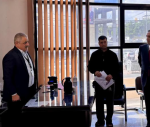My experience with small apps over the last couple of years has brought me to appreciate, among others, three lovely, truly useful apps that I run on my laptop computers.
The number of small software application programmes, apps as they now say, has grown to a ridiculously large size over the last five or seven years. Smartphones and tablets are two of the main reasons behind the craze, but of course many of these apps also work on full-size computers, laptops and desktops included.
From free, to cheap and then expensive, the price range is wide. Price however is not an issue per se. What is becoming a nuisance is the incredible number of apps that are totally useless, ridiculous, or are buggy. And we’re talking in the thousands here, not in the hundreds.
Moreover, if you happen to look for one given type of app to cover your specific need (say photo retouching) you’d typically end up with tens of different products, from various sellers that offer to do more or less the same thing. Which one to choose then? It’s a headache — guaranteed.
In the jungle of apps you can always find a few jewels, small apps that make a difference in your daily living with the machine. There aren’t many around, and finding these rare jewels often is a matter of luck. A friend might have told you about them, or your wise, savvy and clever search on Google would have led to it.
Back to my favourite three apps I mentioned at the beginning. The main award I gladly present to Awesome Duplicate Photo Finder (ADPF). Here’s why.
I was putting some order in my personal photo collection that counts about 9,000 photos on hard disk. I needed to find eventual duplicates so as to eliminate them. The problem was that eventual duplicates would have different file names, or would have been cropped or heavily processed for colour adjustment and other settings. How then was I supposed to find these duplicates, short of manually browsing through 9,000 files and trying to remember which ones “look” more or less like the others? A nerve-breaking, time-consuming task by all means.
Then I remembered that Google had an online search-by-image function, a feature that most of us have probably used at least once. You simply upload a photo from your hard disk to the web and then Google tries to locate a similar one, provided of course it is somewhere on the web. So I assumed that a similar function would be available, a fortiori, if one wanted to search for similarly looking photos on one’s local hard disk. Surely it should be even easier or at least faster than searching the entire cloud!
And so after experimenting with of couple of apps that pretended to do the job I finally found the Holy Grail, ADPF. I asked it to search through the 9,000 photos. It only took it 25 minutes to finish the processor-intensive exploration and come up with a report. It found a total of 700 photos that it assumed were duplicates, two by two. It even indicated the ratio of “matching certainty”. Those for which the match was 100 per cent were absolutely the same, while others were found to be anything from 10 to 90 per cent similar. The results were very accurate and the app didn’t make one single mistake. I adopted ADPF immediately, especially when I found that it was legally, genuinely free. ADPF is a must for all those who handle photo collections on hard disk. Well done ADPF.
The other two applications I sing the praise of are Better File Rename (BFR) and Macro Express (ME).
They may not be as spectacular as ADPF but for those who handle a large number of files of any sort — don’t we all? — these two apps are valuable utilities.
BFR lets you rename or renumber the contents of entire folders and subfolders in a snap. An example: You can add “Project1_xx” to the beginning of all the files within a specific folder, with xx being an automatic numbering that BFR would do for you. Or you can replace the string “Ongoing” by the string “Done” in all the files names in a given folder. The possibilities and the combinations are limitless. The app is fool proof, intuitive and fast. For $20 as the average price online, BFR is a time-saver that pays for itself in a few minutes.
ME lets you programme long sequences of keyboard strokes and mouse clicks and actions you would otherwise have to manually repeat countless times. An example: A given task requires you to do “Alt+C, open a blank word document, Alt+V, Ctrl+A, select the Consolas font, select red as font color, Ctrl+S, Ctrl+W, mouse click down”, and to repeat this 100 times. Imagine the pain if done manually. ME allows you to programme the sequence, to give it a hot-key or shortcut name (for eg. Alt+Ctrl+8) and then to launch it, telling it how many times to repeat. You then let your hands off the keyboard and watch ME do the job. Again, these are precious time-savers, not to mention the wrist pain they’d spare you.
Admitted, ME targets the computer power-user more than the casual one. It is not as easy to use as BFR or ADPF and is not as intuitive, but the little learning effort required would be worth the trouble in many an instance. Still, the $40 it costs would be money well spent.
Whenever I reformat a machine and reinstall the entire operating system from scratch, and after reinstalling the essential Microsoft Office, understandably, the next three important apps I always reinstall are ADPF, BFR and ME.















